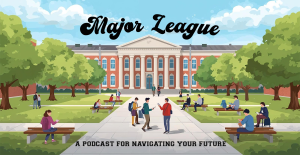The Price of a Degree
February 19, 2020
Since the age of seven, I have wanted to go to college. Growing up, I was always infatuated by the idea of living on my own with a roommate and dormmates. I dreamt of joining a sorority where I would make lifelong friends. I looked forward to what would surely be the best four years of my life.
Now as a senior, my infatuation has dwindled and my dreams were quick to fade away.
As one of the lucky few seniors at present, I have already committed to a college. I was able to apply for a ten-day review application to my number one university. I received word of my acceptance in late October, before I could hit send on any of my other applications that would cost anywhere from $25- $70 dollars apiece. Additional SAT score submissions would cost an extra $12. I was lucky to save all that money.
But while I’m ahead of many others in the process, I’m getting an early taste of a harsh reality that nearly all of us will face eventually.
One of the things that movies, TV shows, and even adults don’t talk about is all the stress that students go through before beginning college. For families who are “average” in income or the student being “average” in academics, the chances of gaining a lot of money for college isn’t especially high.
It can be demoralizing to hear of students who boast of full-ride scholarships or have to pay very little for college based on their academic or athletic achievements. Don’t get me wrong – I’m happy for them, and I readily acknowledge that we’re not all equally deserving of such awards.
But many other students are having to go through the time of applying for scholarships that seemingly hundreds of other NA students are also competing for. The stress that comes with trying to figure out how to pay for college has left some kids feeling stranded on an island.
At the end of a four-year college experience, many of us will graduate with anywhere from $60,000 to over $100,000 in debt. It’s a financial burden that teenagers sign up for when they are 18 years old, and it’s a burden that can affect them for the rest of their lives.
It’s well known that American student debt is well above the international norm, with the our country’s student debt currently at $1.6 trillion. The average annual increase in student debt from 2014 to 2019 is about 230 million. From 2014 to 2019, the debt increased by 33%.
Most public university tuitions are cheaper than private schools. Colombia University’s annual tuition is $55,000, Yale’s $49,500. Locally, Robert Morris University costs about $32,000, Duquesne $35,000. Public universities such as Pitt and Penn are under $20,000 in-state.
Yet the cost of any school can add up for families of average means.













